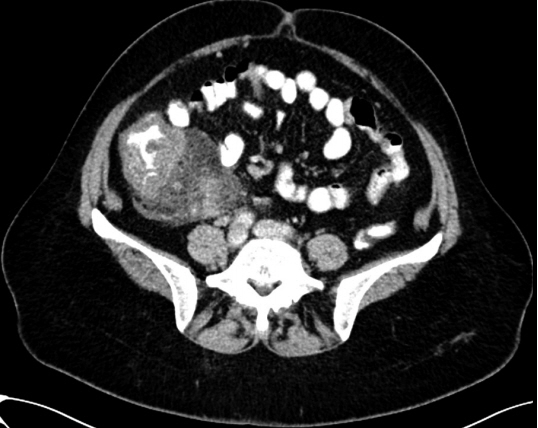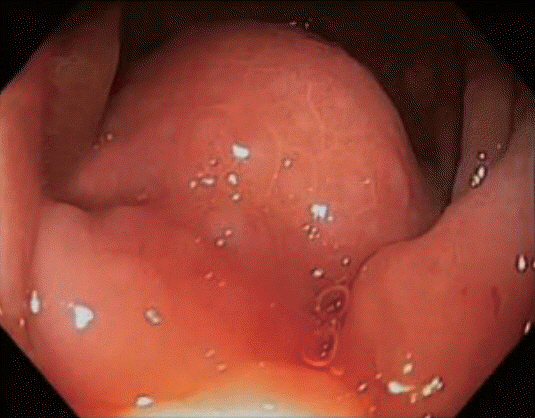Clin Endosc.
2017 Mar;50(2):209-210. 10.5946/ce.2016.041.
Nodular Lymphoid Hyperplasia with Aggressive Endoscopic Appearance in the Colon of an Adult Woman
- Affiliations
-
- 1Department of Gastroenterology, Benizelion General Hospital, Heraklion, Greece. gpaspatis@gmail.com
- 2Department of Pathology, Benizelion General Hospital, Heraklion, Greece.
- 3Department of Surgery, Benizelion General Hospital, Heraklion, Greece.
- KMID: 2383541
- DOI: http://doi.org/10.5946/ce.2016.041
Abstract
- No abstract available.
MeSH Terms
Figure
Reference
-
1. Albuquerque A. Nodular lymphoid hyperplasia in the gastrointestinal tract in adult patients: a review. World J Gastrointest Endosc. 2014; 6:534–540.
Article2. Ranchod M, Lewin KJ, Dorfman RF. Lymphoid hyperplasia of the gastrointestinal tract. A study of 26 cases and review of the literature. Am J Surg Pathol. 1978; 2:383–400.3. Rubio-Tapia A, Hernández-Calleros J, Trinidad-Hernández S, Uscanga L. Clinical characteristics of a group of adults with nodular lymphoid hyperplasia: a single center experience. World J Gastroenterol. 2006; 12:1945–1948.
Article4. Chandra S. Benign nodular lymphoid hyperplasia of colon: a report of two cases. Indian J Gastroenterol. 2003; 22:145–146.
- Full Text Links
- Actions
-
Cited
- CITED
-
- Close
- Share
- Similar articles
-
- A Case of Primary Jejunal Malignant Lymphoma Associated with Nodular Lymphoid Hyperplasia
- Surgical Treatment of the Pulmonary Nodular Lymphoid Hyperplasia: A case report
- Diagnostic Pediatric Colonoscopy for Lymphoid Hyperplasia of Terminal Ileum
- Endoscopic features and clinicopathological relationship of colonic lymphoid hyperplasia
- Pulmonary Nodular Lymphoid Hyperplasia in a 33-Year-Old Woman




